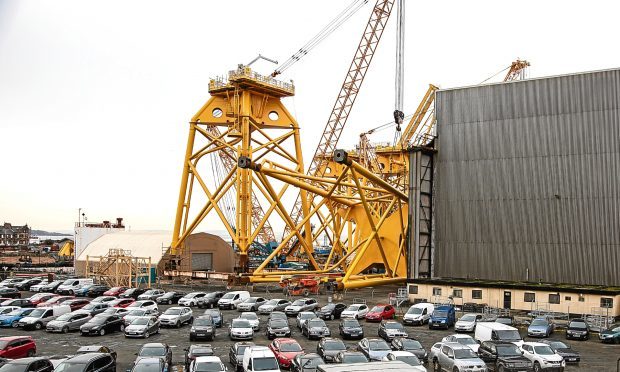All hands to the pump.
That was the rallying cry thrown up at administration threatened Fife heavy engineer BiFab on Monday as the workforce appraised their options in the face of almost certain calamity.
Their admirable response was to stand firm and offer to work without guarantee of pay.
They are hoping their gesture will give management the breathing space they need to find a way to escape the financial black hole they are currently staring into.
I hope for sake of them and and their families that it works.
BiFab’s current woes – at least in part – seem to stem from a breakdown in its relationship with Seaway Heavy Lifting (SHL), a specialist offshore contractor that is part of the Luxembourg-based Subsea 7 group.
SHL is the principal contractor on the £2.6 billion Beatrice wind farm in the Outer Moray Firth and BiFab is a subcontractor on the project, brought in to build the subsea foundations that are required to ensure the turbines can stand tall against the elements.
The pair are now at loggerheads and it is easy to see who has the upper hand.
In effect, SHL is the parent here and BiFab the child.
With both its main contracts tied in to Beatrice, BiFab has no other source of significant financial nourishment available to it right now other than through SHL.
A breakthrough in negotiations between the two companies is needed but with the clock ticking inexorably towards full administration proceedings and SHL citing production problems and cost overruns at the Fife yard, I suspect some tough choices will have to be made if BiFab is to survive the next few days.
But the problems facing BiFab are multi-faceted and it may be that a sticking plaster solution to get through the current crisis – if such a thing can indeed be found – may not, ultimately, be enough to keep the wolves from the door.
That is because there is a wider issue at play here in which oil and gas and renewables subcontractors often find themselves in the precarious position of having all their eggs in one basket.
The energy sector is uber-competitive and there is only a certain amount of work to go around.
That means that tier two and tier three contractors don’t have the luxury of a diversified order base on which to rest their laurels.
Investment in the North Sea is only now showing tentative signs of recovery following the oil price crash of more than two years ago and the market and margins will remain tough for some time to come.
And, other than Beatrice, the offshore renewables sector has yet to gather a real head of steam in Scotland.
The fact that bird protection charity RSPB Scotland has now lost its legal bid to overturn permissions for the massive Neart Na Gaoithe, Inch Cape and Seagreen wind farms in the outer firths of Tay and Forth is positive in the context of building a strong and sustainable supply chain.
But it is not a panacea.
The Scottish and UK Governments have a duty here to ensure the economic environment is such that investment decisions over new developments in Scottish waters can be made more quickly and easily.
The needs of our heavy industries must be taken seriously and a robust strategy developed and acted upon to ensure companies can plan for a future that is more than the very short-term.
Otherwise, BiFab won’t be alone in facing such troubled times.










